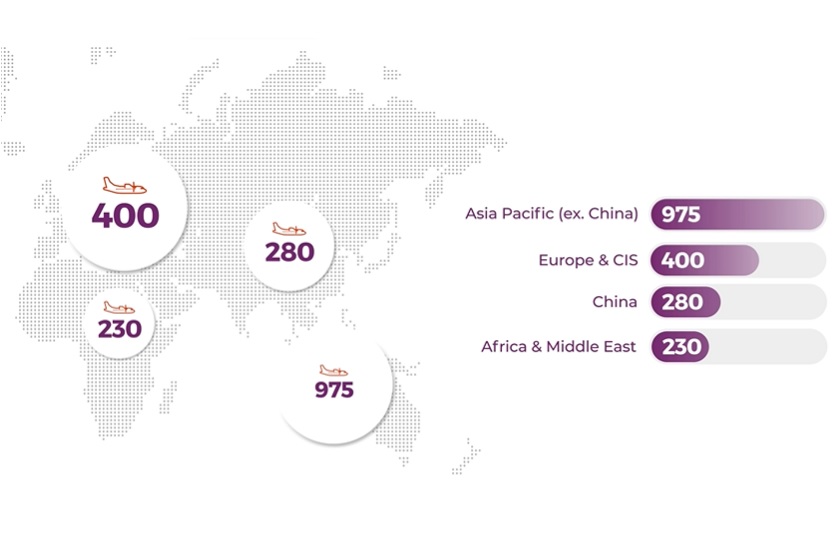|
(25 July 2022, 10:28 +07)
ATR has forecast global demand for at least
2,450 turboprop aircraft over the next 20 years.
The report, ATR�s first global market forecast
since 2018 covers the 2022 to 2041 period,
predicts a strong return to business after a challenging two years
for the aviation industry.
Fabrice Vautier, SVP Commercial at ATR, said, �The
forecast demonstrates that essential connectivity is needed both
for emerging and mature markets now and in the future. The biggest
driver of demand is airlines modernising their fleets to meet the
highest environmental standards while making air transport
accessible to all. Replacements will account for seven out of ten
new aircraft, the remainder will be deployed to enhance regional
mobility and connectivity through new routes.�

ATR has forecast global demand for at least 2,450 turboprop aircraft over the next 20 years.
Today,
turboprops make up around 40 per cent of the regional passenger
fleet. The forecast predicts that the global fleet of turboprop
passenger aircraft with at least 30 seats will rise from 1950 in
2022 to 2660 in 2041 � an increase of around 36 per cent. The
biggest rise being in Asia Pacific, China and Latin America.
The report also identifies the growing role of air cargo.
Freighters have come to play an essential role in supporting
regional communities, partly due to the acceleration of the
digital economy and e-commerce.
The forecast
highlights that with turboprops making up to 94 per cent of the
regional freighter fleet, this presents an important area of
opportunity for the industry. The global fleet of turboprop
freighters is predicted to rise from 380 in 2021 to 550 in 2041 �
an increase of 45 per cent.
South East Asia, China and Latin
America have been identified as areas of increased regional
demand, as customer expectations for faster delivery expands
beyond key primary gateways in each region.
An
additional factor driving future demand in turboprops is their
ability to address the changing regulatory environment created by
climate challenge. Increasing fuel prices, growing carbon
taxation, as well as greater passenger demand for lower emission
travel all mean that the aviation industry is favouring low-carbon
emitting aircraft such as turboprops. Even today, if all regional
jets in Europe were replaced by turboprops, the reduction of CO2
emissions would be equivalent to the amount of CO2 removed by a
forest of around 5000 km2, more or less the size of the Balearic
Islands!
The report concludes that new
disruptive technologies, likely to be adopted from 2030 onwards,
will further bring turboprops to the forefront of the aviation
industry, helping play a vital role in connecting people and
businesses and driving economic growth around the globe.
You can download the full 49-Page, 15.6 MB report
in .pdf format,
here.
Latest
exclusive video interviews: Future of Air Travel -
Interview with Sumesh Patel, President of SITA Asia Pacific; Miss
International Queen 2024 (MIQ 2024) - Interview with Alisa
Phanthusak, MD, Tiffany's Show Pattaya, Thailand; 16
HD Video Interviews from Routes Europe 2024 in Aarhus, Denmark;
9 HD Video Interviews from Routes Asia 2024 in Langkawi, Malaysia;
Standard to Open Residences in Hua Hin and Phuket, Thailand; Video
Interview with Amar Lalvani, Executive Chairman;
9 Exclusive Video Interviews
from ASEAN Tourism Forum
2024
in Vientiane, Laos;
8 NTO Press Conferences from ASEAN Tourism Forum 2024 in
Vientiane, Laos;
13 HD Video Interviews from World Travel
Market 2023 in London, England;
5 HD Video Interviews from APG World Connect 2023 in Monaco, France;
and
15 HD Video Interviews from Routes World 2023 in Istanbul, Türkiye.
|
Headlines: |
|
|
